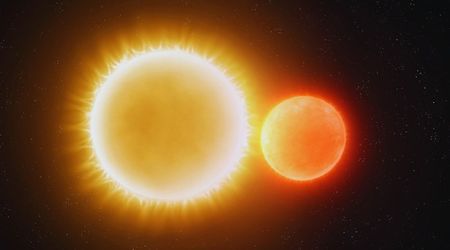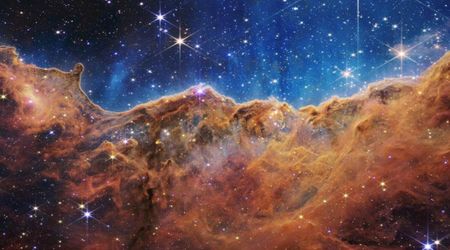First-ever images of the Sun’s south pole captured by Solar Orbiter spacecraft

The European Space Agency's (ESA) Solar Orbiter spacecraft has achieved a remarkable feat by transmitting the first-ever views of the Sun's south pole back to Earth. These unprecedented video and image data are crucial for scientists to unravel the mysteries behind the Sun's cyclical behavior, specifically how it transitions between periods of intense solar activity and quieter phases. Understanding these cycles is vital because powerful solar activity has the potential to disrupt satellite communications and cause widespread power outages on Earth, as reported by the BBC.

The newly acquired images offer a detailed glimpse of the Sun's atmosphere, revealing a luminous, shimmering expanse where temperatures can soar to a staggering million degrees Celsius. Amidst this brightness, darker clouds of gas are visible, although significantly cooler at a searing one hundred thousand degrees, they still represent extreme heat. According to Professor Carole Mundell, ESA's Director of Science, these closest and most detailed pictures ever taken of the Sun will be instrumental in comprehending the fundamental workings of the star that sustains life on Earth. She emphasizes the importance of this achievement, stating, "The Sun is our nearest star, giver of life and potential disruptor of modern space and ground power systems, so it is imperative that we understand how it works and learn to predict its behavior."
🌞 See the Sun from a whole new angle.
— European Space Agency (@esa) June 11, 2025
For the first time, our Solar Orbiter mission has captured close-up images of the Sun’s mysterious poles, regions long hidden from our view.
In 2025, Solar Orbiter gave us a first-ever look at the Sun’s south pole.
Remarkably, it… pic.twitter.com/EhyYxtDyaR
While the Sun appears as a featureless disc from Earth, special filters and different frequencies reveal its true nature: a dynamic fluid ball with twisting and turning magnetic fields on its surface. These magnetic fields are responsible for generating flares and loops of gas that extend into the Sun's atmosphere, ultimately dictating periods of calm and intense solar activity. Scientists understand that the Sun undergoes a cyclical process. During its quiet phase, the magnetic fields are ordered, and the Sun maintains a stable magnetic north and south pole, preventing violent explosions. However, these fields become increasingly complex and chaotic as they reorient, with the north and south poles flipping approximately every 11 years.

This chaotic period is when the Sun attempts to reduce its complexity, leading to violent outbursts, where solar particles are ejected towards Earth. These solar storms can disrupt communication satellites and power grids, although they also create stunning auroras. According to Professor Lucie Green of University College London (UCL), accurately predicting this activity with computer models has been challenging due to a lack of data on the migration of magnetic fields toward the poles. However, this has now changed with the Solar Orbiter. Green enthusiastically stated, "We now have the missing piece of the puzzle."
She further added, "The reversal of the polar magnetic fields on the Sun has been one of the big open questions in science and what we will be able to do with Solar Orbiter is measure for the first time the really important fluid flows that grab pieces of the magnetic field across the Sun and transport them to the polar regions." The Solar Orbiter has also taken groundbreaking images, revealing the motion of chemical elements within various solar systems. This feat was accomplished with the SPICE (Spectral Imaging of the Coronal Environment) instrument, which identifies specific light frequencies (spectral lines) emitted by elements such as hydrogen, carbon, oxygen, neon, and magnesium at their characteristic temperatures. Crucially, the SPICE team has now, for the first time, used these spectral lines to measure the velocity of solar material clumps precisely. These measurements are vital for understanding the mechanisms by which particles are propelled from the Sun, forming the solar wind.









